|
At the end of the day, in a threatening position, an individual purporting to practice a traditional (Chinese) martial arts - must be able not to win trophies or gain coloured belts or sashes - but rather REMOVE the systemic threat existing in the immediate environment through the use of a 'decisive' act of disciplined violence. Unlike the modified martial arts used within modern sports, an 'effective' technique being deployed in a 'live' situation does NOT need to look good or conform to an unreasonable 'aesthetic'. The person being threatened, at the moment the decisive action is being deployed, is entirely on their own for the duration of the conflict. Whatever happens next becomes a matter entirely of their own affair - as other people (logically) tend to 'distance' themselves from the conflict as a matter of life-preservation and self-defence by association. Of course, the action might go wrong and the chosen technique fail to work. Above, a conflict begins between two young men (speaking Putonghua) arguing over who has the right to 'sell' in a certain area - with an Old Man attempting to de-escalate the situation. The young man launches a 'punching' attack which works precisely as intended. The armed young man is knocked down and is unconscious for a short time. He is kept in place by a foot on the chest - as NO further action is used against him once the knife is taken away from him. As you can see - violence is a horrible answer to any question - and a well disciplined and peaceful society is preferred over that of a violent situation. In this circumstance, the young man with the knife may well be suffering from mental health issues that now need to be treated. Although violence is NOT the answer - even though it may be required at certain times - when violence is needed it must be decisive enough to END the over-all level of existential violence and prevent any further damage to society and the people living in it!
0 Comments
Our Chinese grandfather - Chan Tin Sang (1924-1993) fought as part of the 'People's Militia' (with his Section also known as the 'Hakka Resistance') in the Hong Kong and New Territories region. When he recalled these events years later – he often described this time period (1941-1945) as ‘The years covered in blood.’ - as there was never a time that he was not covered in his own blood or the blood of his enemies. Hong Kong had been under the imperialist rule of the British from 1841-1941 - when the Imperial Japanese Army successfully overran the area - killing thousands of ethnic Chinese POWs and civilians in the process! Thousands of ethnic Indian and 'White' British soldiers were killed in combat, wounded and taken into captivity (where many were tortured). What follows is description of what the ethnic Chinese people experienced throughout Hong Kong and the New Territories – a reality either deliberately ignored or simply not known by Western historians and biographers. Part of the problem is not simply political bias or historical preference (although these two issues undoubtedly play their part) - but rather that not ALL ethnic Chinese people understood fully what was happening! The ‘White’ British Administration did not trust the ethnic Chinese population – as they were afraid of homegrown uprisings – but positively detested the Imperial Japanese! This is why the British Authorities ‘refused’ to arm the ethnic Chinese population at the beginning of the Japanese troubles! Rumours of a fifth column in Kowloon turned out not to be true (these groups were comprised of Japanese sleeper cells activated to meet and assist the incoming Japanese troops). As the British Authorities did not arm the local ethnic Chinese populations with modern firearms – these people (comprised of the Cantonese, Hakka, Hokkien and Teochew ethnic groups amongst others) had to rely upon their traditional martial arts skills to fight the Japanese invaders. This was NOT a problem as the ethnic Chinese attitudes were still very ‘feudalistic’ at the time and the martial arts incredibly effective on the battlefield and in self-defence encounters! How did (modern) British arms enter the area? This seems to have been through a behind-the-scenes agreement between the CPC and the British government. The People's Militia was organised by the Communist Party of China (CPC) - as the Nationalist government had no interest in Hong Kong being part of a united China again (for the British this must have been a tricky business as the CPC was not formally in power in China - nor was it ‘recognised’ by any ruling government outside the USSR). It is remarkable that given CPC troubles being experienced in Central and Northern China at the time (fighting the Nationalists and the Japanese) that it was able to 'project' its power into what was then a very distant and remote area – but the understanding that had been reached between the CPC and the British allowed a small trickle of UK arms into the region to be used by the local Chinese people! This 'Resistance' movement against the Imperial Japanese was permitted providing the CPC power structure (together with the British arms) be 'withdrawn' from the region following the eventual defeat of the Imperial Japanese! Our Hakka Chinese family clan in Sai Kung suffered terribly at the hands of the brutal Japanese - with women and girls routinely 'raped', 'tortured' and 'murdered'! Not only do we possess eye-witness accounts of this barbarism - but long before the internet the Japanese liked to 'photograph' (and sometimes 'film') their crimes for all to see! These are crimes that the Japanese committed all over China and Asia - and which the Japanese government has yet to properly acknowledge and apologise for! Chan Tin Sang was 17-years old in 1941 and 21-years old in 1945 - when the war ended. During that time, he lost most of his immediate relatives and was accustomed to fighting ‘hand-to-hand' with the fanatical Japanese soldiers - using his Hakka martial arts skills to survive (his father died fighting in this manner in 1944). Later, in search of a better life - Chan Tin Sang came to England in 1956 when he was 32-years old. He worked hard for 10-years in what became London's 'new' Chinatown and finally saved up enough money to bring his wife and daughters to the UK (as they already possessed 'British Citizenship') in 1966 (when he was 42-years old). He passed away in 1993 when he was 69-years old - which was quite old at the time - but many believe that the years of deprivation (and continuous violence) he experienced between 1941-1945 definitely shortened his lifespan. Sometimes - as individuals and groups - we possess no choice. By the time the Western allies were landing on Normandy 79-years ago – the Japanese Occupiers were still strong and effective throughout Hong Kong and the New Territories! It would be with the entry of the Soviet Red Army (during late 1945) into Manchuria that begin the demise of the Imperial Japanese Army and signal the return of the British to Hong Kong!
Translator’s Note: The antics of Master Ba Baoguo has been unfolding since around 2002 – and it has done so in both the UK and China! Although he has served in the PLA and has had genuine martial arts training experience – in his later years he developed a very controversial business persona that has been lucrative and very successful (mimicking as it does – its Western fighting ‘hype’ counterpart). His fame began not in China, but between 2002-2007 when he lived in the UK and attracted hundreds of Western people to his particular brand of martial arts! He then exported this business success back to China where his fame spread on the internet (which I shall write about in a subsequent article). Of course, it goes without saying that I reject all attempts to ‘racialise’ this subject and that I believe in the legal notion of being innocent until proven guilty. I do not know Ma Baoguo and have never met him, but I think that both sides of an argument must be fully aired if the notion of freedom of thought is to be maintained. What follows is my English language translation of the original Chinese language article that appeared in the People’s Daily during 2020 – just after a 68-year-old Ma Baoguo was knocked out by a much younger man in China – following a ‘filmed’ challenge match! (Indeed, watching this ‘match’ on video-sharing platform Bili Bili was the first time I had encountered Ma Baoguo and I was curious to investigate the background to this martial madness)! ACW (15.11.2022) Ma Baoguo - who calls himself a ‘Master’ and ‘Inheritor’ of the ‘Hunyuan’ (浑元) ‘Xingyi’ (形意) Taijiquan (太极拳 ) tradition - has become famous today. It is said that his ‘achievements’ in ‘martial arts’ have become respected worldwide - but recently his thunderous words have been popularized – and the circus that now surrounds him has become known as the ‘Ma Baoguo phenomenon’! From becoming popular in the UK and then on the Internet in China - to participating in commercial performances and then filming so-called inspirational films – the Ma Baoguo ‘brand’ has garnered considerable commercial success! Some of the words and deeds used by Ma Baoguo (and his surrounding ‘team’), however, are nothing other than fake grandstanding and theatrical bluffing. In the final analysis – his entire performance is nothing but a farce. Although Ma Baoguo continuously states that he is promoting traditional martial arts, in fact his antics are only hurting the traditional martial arts he claims to uphold! Ma Baoguo often rebukes young people for not caring about traditional martial arts - but he himself often acts with no integrity – and does not produce any words or deeds that demonstrate ‘respect’ for traditional martial arts! The series of farces surrounding Ma Baoguo are ‘funny’ (acknowledging that there is a certain ‘comedic’ element to his show business) - but with regard to the reputation of traditional Chinese martial arts - ‘laughing’ is simply not good enough! If an individual relies upon grandstanding, then popularity may well follow, with an expansion of business territory achieved through cheating and deceiving! This is not an acceptable attitude to take within China! What kind of moral values is this approach advocating? What do the people behind Ma Baoguo intend to achieve? Anyone with a discerning eye knows that all that Ma Baoguo does is designed for nothing more than commercial interests. A number of internet platforms support Ma Baoguo because he is popular, and his activities generate a high frequency of traffic! This is the primary commercial value to Ma Baoguo’s antics. Of course, in the background there are often ‘hidden’ commercial interests that reward people like Ma Baoguo with large sums of money – even when it involves direct threats to his health (as suggested by him voluntarily submitting to being knocked unconscious by a younger man when aged 68-years old)! Whatever the reasons, this type of cultural corruption is not to be permitted within modern China. Whilst making an honest living is perfectly acceptable – pursuing a path which corrupts and damages Chinese culture - is not! Chinese culture cannot function correctly if such ideas are allowed to proliferate! Everyone has the right to practice martial arts and express their own opinions and ideas - but if they deviate from the true spirit of Chinese martial arts and attempt to deceive the public - then such people are no different from liars. Chinese society should not tolerate such behaviour and must encourage the exact opposite! Ma Baoguo can think what he wants about Chinese martial arts – but his financial exploitation of the public must stop, and he must not allow pointless threats to his health just to accumulate more profit! Chinese Language Sources: 马保国闹剧,该立刻收场了
《 文摘报 》( 2020年12月03日 01 版) 以“浑元形意太极拳掌门人”自诩的马保国,如今知名度蹿升。按说他“武术”的“造诣”世人皆知了,但最近他的雷人雷语却被热传,这已然是“马保国现象”。 从网络蹿红,到参加商演,再到接拍所谓励志电影,马保国已包装出相当的商业价值。 马保国的一些言行,实际上就是哗众取宠、招摇撞骗,说到底是一场闹剧。口口声声弘扬传统武术,实际上做的都是伤害传统武术的事。斥责年轻人不讲武德,他本身却毫无正大光明、谨言慎行、尊崇敬畏传统的武德。 对围绕马保国所发生的一系列闹剧,不是一笑了之那么简单。如果靠哗众取宠就可以风生水起,靠招摇撞骗就能拓展商业版图,这是什么样的价值取向?马保国背后的人到底想干什么?明眼人都清楚,无非就是商业利益。推波助澜、炒作放大马保国的一些互联网平台为什么?无非是流量至上,背后还是利益。然而,无论平台还是资本,蹭热点、找卖点的前提,都是遵循公序良俗,弘扬正确的价值观,否则就会沦为浅薄而拙劣的商业游戏。 人人都有习武的权利,也可以表达自己的观点和想法,可是如果背离武术精神,没完没了在公开场合信口开河,这就与江湖骗子无异。而这样的人受追捧,值得我们深思。 (人民日报客户端11.28) Miyagi Takashi [宮城敬] (1919-2008): Establishing ‘Komeikan’ and Guiding Principles! (17.10.2022)10/17/2022 ‘It was around 1951, when I started teaching Goju Ryu Karate-Do in Tokyo (Mainland Japan). Immediately after WWII, there was a trend throughout Japan for Karate-Do to be firmly separated and divided into distinct ‘Styles’ - each with its own clear ‘lineage’ of teachers traceable all the way back into history - to a definite origination. National organisations were quickly formed, and this led to local branches throughout the entirety of Japan! An important element of this process involved the development and consolidation of Karate-Do training halls established throughout all Universities, Colleges and Schools, etc - forming a firm foundation of Karate-Do throughout Japanese culture. This was the start of modern Karate-Do seen not only throughout Japan – but also throughout the world! During this period, I received many requests to join various Karate-Do organisations, but I did not agree with much of the guiding principles or definitions that I was told. Instead, I independently formed the umbrella organisation of the Japan Goju Ryu Karate-Do Federation. This allowed a broad platform for a wide range of people to join and gather to train within Goju Ryu Karate-Do – but within this I also established the ‘Goju Ryu Family Head Brilliant Transmission Training Hall’ (剛柔流空手道宗家講明館 - Go Ju Ryu Kara Te Do So Ke Ko Mei Kan). The latter sub-group was designed to be very strict, narrow and highly disciplined with an exclusive membership. Together, this foundation served the basis through which I decided to teach Goju Ryu Karate-Do. During 1963 (Showa 38), I published two books which expressed this ‘external’ and ‘internal’ approach to my Goju Ryu teaching: a) ‘Karate-Do – How to Enjoy Practice’ (空手道の楽しみ方) - External b) ‘Orthodox Karate-Do – An Introduction’ (正統 空手道入門) - Internal This is how the Miyagi Family lineage of Goju Ryu Karate-Do was able to progress further and beyond its physical training centres! Individuals who lived a long distance from our training halls were able to pick-up these books and learn about our presence! This led to our group being contacted by NHK TV to enquire if I would participate in a filmed documentary entitled ‘Contemporary Record of Spiritual Revival’ (現代の記録・精神復興) - which was eventually broadcast TV on February 1st, 1964! In this documentary I was filmed practicing ‘Sanchin’ and ‘Seipai’ Katas! Around this time, the Nippon Budokan (日本武道館) was also established, whilst the issue of developing human resources was being addressed throughout a reconstructing Japanese society! The purpose of this programme with regard to Karate-Do was to explore the spiritual aspects of Japanese martial arts. Due to this influence, in 1966 (Showa 41), I set-up a Dojo in Kunitachi City, (Tokyo) and settled-down and started teaching Karate-Do in earnest. My teacher was my father – Miyagi Chojun. I was taught the ‘external’, ‘internal’ and ‘integrated’ path of Goju Ryu Karate-Do. This martial path has its roots within Higaonna Naha-Te – which was heavily influenced by Fujian White Crane Fist from China! All this was conveyed to me by my father and this education established the guiding principles through which I teach Goju Ryu Karate-Do. This is the ‘spirit’ of Karate-Do which must be maintained at all times through the replication (from one generation to the next) of the exact and correct physical Karate-Do techniques! Without this sound foundation the mind and body cannot be properly prepared so that effective offensive and defensive techniques can be correctly conveyed, learned and reproduced on the physical plane. The mind must be strengthened, expanded and freed from the dominance of the body – but this can only be achieved by disciplining the body so that the mind can be freed. When the body is properly positioned and perceived – the mind and body enter a new dimension of existence. Although Karate-Do has spread all over the world – I do not agree with sport Karate – which is a deviation away from the true ‘spirit’ of Karate-Do. It sets the wrong example and strengthens the very ego proper Karate-Do is designed to overcome! We must preserve the ‘spirit’ which manifests through the correctly performed physical techniques of Karate-Do! There should be NO fabricated ‘competition’ between individuals as this is the cultivation of pointless aggression! The only competition is between our conditioned minds and bodies – with our training colleagues conspiring to help us on our journey (and we on theirs)! The worst example of this development is ‘Kata’ competitions – where all the traditional purpose and value of a Kata is removed and replaced simply to ‘entertain’ an audience to win a pointless medal! To gain these awards – we lose the ‘spirit’ of genuine Karate-Do. The true purpose of Kata is being abandoned as each generation loses vital elements of the Kata passed on from China to Okinawa! Karate-Do begins and end with Kata and I would ask all the modern Karate-Do practitioners, Referees and other professionals to ‘think’ about this situation and perhaps assist one another in preserving the genuine spirit of Karate-Do! Please do not demean your sacred martial art – as untold numbers of people have suffered in the past to learn, preserve and pass on genuine Japanese martial arts!’ Japanese Language Source: 講明館の設立と指導理念 私が東京で空手道を指導し始めたのは昭和26年ごろである。戦後いち早く、わが国の空手道界では、各流派などによる団体結成の動きが見られ、また大学の空手部を中心とした連盟が結成されるなど、今日見られるように全国的な発展へつながっていったわけである。その間、私のもとに団体設立のために参加を求める声が何度もあった。しかし、私はどうもその在り方に同調できないでいた。私は独自に日本空手道剛柔流連盟を結成、剛柔流空手道宗家講明館を設立し、そこを本拠に指導に当たることにしたのである。
1963年(昭和38年)に空手道の初心者向けに『空手道の楽しみ方』や『正統 空手道入門』を出版、正しい空手道の学び方を世に問うた。また、NHKから請われ1964年2月1日放映の教育テレビ番組「現代の記録・精神復興」に出演し、サンチンの指導と形セーパイを演武した。このころ日本武道館の建設に着手され、「人づくり」の問題が高まっていた。日本武道の精神的なものを模索しようとしたのがこの番組の目的であった。その後、私は1966年(昭和41年)に東京・国立市に道場を構え空手道の指導に本格的にあたった。 私の指導理念は、師父宮城長順の指導法と空手道精神を基礎に、空手道本来の伝統性を維持しつつ、同時に教育的・体育的観点から身体のもつ攻防の技を自在に体得できるようにすることである。 空手道が全国的に普及したとはいえ、昨今、空手道の真の伝統性が失われ、いわゆる「競技空手」に終始した指導が見受けられるのは誠に残念である。最近は「形試合」も行われるようになったが、形の意味がわからずに演じられていたりして、形の乱れが目に付くものもある。したがって試合の審判方法と各流派の形についての研究をもっと真剣に行うべきだと思う。「形に始まり形に終わる」という空手道修行の警句を忘れてはならない。 Dear Tony
I was discussing the idea of 'double-punching' with a student a few days ago - and how often double-punching appears in our Longfist Forms (nearly every other movement) and how many different gongfu Forms retain double-punching! Yang Style Taijiquan retains the double-punch to each temple - although I believe it is termed 'Two Winds Pierce Ears' (双风贯耳 - Shuang Feng Guan Er) to hide the true meaning and intention (there was a lot of this type of colourful or deliberately misleading terminology to befuddle anyone attempting to steal the art). When I was young, this move was taught to me as 'Fist Ear' (拳耳 - Quan Er) or 'Box the Ears' - even though it has absolutely NOTHING to do with striking the ears! In the local Hakka culture (where water buffaloes abound) - this movement was termed striking with the 'Water Buffalo Horns' (水牛角 - Shui Niu Jiao) or 'Sui Nyiu Gok' in the Hakka language. The two large knuckles of each closed hand 'insert' into the anatomical gaps either side of the forehead which denote the 'temples' (the place where the hair greys on a man and the passing of time is recorded). Hence 'temporal' (or the Latin 'tempus') referring to the 'passing of time', etc. Interestingly, the Chinese language term for 'temple' (as an anatomical designation) is '颞' (nie4) which can be analysed as follows: a) Left-hand particle = 聶 (nie4) - comprised of '耳' (er3) or 'ear' repeated three times - with one ear stacked upon two ears! The simplified form is '聂' and appears to mean 'whisper into the ear'. b) Right-hand particle = 頁 (ye4) or the anatomical human 'head' - and is comprised of: Top element: '丆' (han3) a variant of '厂' - meaning 'cliff-top'. Middle element: '自' (zi4) pertaining to the 'self' or 'individual' - a picture of the 'nose'. Bottom element: ' 儿' (er2) a contraction of '兒' - an infant with an as yet still unformed fontanelle. This may refer to a 'part' or 'area' of the human head that is 'weak' (like an infant) but refers to an anatomical weakness that is retained even within an adult's mature head! I suspect the ancient doctors (or court scholars) described the 'temple' area either side of the forehead as being like a 'third-ear', but an area which was inherently 'weak' to the touch - and which retained this 'weakness' into adulthood. The Taijiquan teachers then talk of the disembodied power (rebounding bodyweight directed by intention - fed through an aligned posture) leaving the fist and 'passing through' the thin temple area (like a strong 'breeze') into the location of the 'third ear'! Perhaps the 'awareness' generated in these parts of the brain-mind nexus (just inside the temple areas) was considered a 'type of hearing' by the ancient anatomists in China. Certainly, the capacity to 'hear' within Chinese martial arts practice involves more than just 'hearing' with the ears! Thanks Adrian Dear Tony
It is interesting how the inner and outer body develops in relation to each fully rounded system, style and school, etc. Each lineage, although comprised of diverse elements from various and very different historical and/or cultural backgrounds, are welded together by a dominant founding-figure, so that a central (interpretating) ethos makes sense of it all! Therefore, if an individual practices a particular system for decades, the inner and outer 'frequency' of how their psychological and biological processes operate - takes on this exact ethos to the exclusion of all other alternatives. In other words, an individual becomes the epitome of the very martial tradition they have committed their life to following! Their thought and physical processes all start to manifest in a specific manner. Health is optimised - even when accidents happen or genetic illnesses appear. A transcending awareness starts to operate whereby the body (regardless of its state or function) is perfect just as it is regardless of conventional issues of health, well-being, ability or disability, etc. This is the mind transcending the body, with the body learning to operate through and around its own limitations, hindrances and obstacles. From a martial perspective, the job is done with efficiency and through the path of least resistance. This is particularly important for the experience of the ageing process - whereby a certain type of inexperienced strength and vigour gives way to a far more profound depth of understanding that is so powerful and exact that it lifts up the physical body (regardless of its state) like a cork floating on the ocean. The young people do not understand this and cannot predict its movement - hence their youth renders them susceptible to defeat through not paying attention and not applying the learning experience. Furthermore, although all aged Masters from different traditions no longer conflict and are well aware of the uniqueness of one another's path, they themselves also appreciate that their own style has bestowed upon each a specific frequency of functionality. Although they can progressively exchange technical information and advice - they also know the true meaning of 'lineage' and how it is like a flowing river from the past to the present, and from the present to future! I suppose we all get used to our own particular frequency of current! The ‘Tensho’ kata is written in Japanese script as ‘転掌’. At first glance, these Japanese language ideograms look similar to Chinese language ideograms but are slightly out of context. This is because these are written as ‘Shinjitai’ (新字体) or ‘New Character Form’ ideograms developed in Japan during the post-1946 period. They are ‘simplified’ versions of traditional Chinese ideograms altered in Japan for the exclusive use within Japanese culture. These alterations of traditional Chinese ideograms are not recognized within Mainland China (which has pursued its own ‘simplified’ ideogram development). This suggests that prior to the 1930s (and Japan’s aggressive war against China) the term ‘Tensho’ may well have been written using recognizable traditional Chinese ideograms. As matters stand, the Japanese term ‘転掌’ (Ten Sho) can be translated as:
転 (Ten) = Rotating, Turning, Moving, Shifting and Transition. 掌 (Sho) - Palm (or ‘Flat’ of the Hand), Control, Rule and Manipulate. When read together, these two Japanese ideograms suggest a ‘continuous and expert manipulation of the (transitioning) open hand with fingers extended and palm exposed’. How would these two Japanese ideograms read in traditional Chinese ideograms? Probably something like this: ‘轉掌’ (zhuan3 zhang3) 轉 (Zhuan) = Turn, Revolve, Wind, Entwine, Envelope, Encircle, Shift, Alter, Change, Seize Victory (from Defeat), Return, Contemplate (Turn-Over in the Mind), Mediate, Reconcile, Wave, Flutter, Divert, Transfer, Evade, Avoid, Support, Abandon, Leave, Arrive and Utter a Spell, etc. 掌 (Zhang) = Palm (of the Hand), Finger, Extended Fingers, Sole of the Foot, Slap, Hold, Grip (Close Fingers), Control, Support and Hold. It is clear that the Japanese transliteration process has simplified by removing essential and very important (Chinese) cultural data and information contained within the original Chinese language ideograms. This means that part of the intended ‘Chinese’ meaning conveyed in the original Chinese martial arts sequences is now ‘missing’ in the titles – where once it was included and obvious. Although the second ideogram ‘掌’ is identical in both examples – the Japanese interpretation is obviously deficient and lacking important meaning – such as the requirement for an equal emphasis being implied for the use of the hands and feet. Whatever advanced and mysterious implications are intended with the hand movements of ‘Tensho’ - exactly the same meaning is intended for the use of the feet! Perhaps the greatest deficiency of meaning lies in the difference between the Chinese ‘轉’ (Zhuan) and the Japanese ‘転’ (Ten)! The Chinese ideogram ‘轉’ (Zhuan) is comprised of the left-hand particle ‘車’ (che1) - which is an ancient carriage (or 'chariot') pulled by a set of horses (introduced into China around 1200 BCE or earlier). This was a relatively stable platform for travel, transportation of goods and as a mobile fighting platform during war. The Wheels operate by moving around and around so that the carriage and contents are transferred from one place to another according to the intent of the driver and wishes of the passengers. The horses are attached to the carriage by various ropes, straps and reins so that the driver can control them whether they move, stop or turn, etc. Sometimes, the horses are controlled by a driver who sits upon one of the leading horses and controls the movement by the ‘grip’ of his legs around the horse’s sides, etc. Usually, the platform not only has four walls and a roof – but the entire structure is covered by a large umbrella which protects the occupants, drivers and guards, etc, from the sun, wind and rain. Expert control and the ability to suddenly change direction, stop or retreat quickly is implied by this particle, which is obviously ‘martial’ in essence. The right-hand particle is ‘專’ (zhuan3) which represents the actions of an ‘expert’ who uses his or her hands to good effect. This is because the top element of this particle is ‘叀’ (zhuan1) - which represents a ‘spindle’ that is expertly controlled and directed by a human hand – this hand is represented by the bottom element of this particle as ‘寸’ (cun4). This is a drop-spindle which must be expertly controlled by the human-hand as it turns and spins – creating thread, yarn or wool, etc. Therefore, ‘轉’ (Zhuan) suggests an expert martial ability that transforms the mind, body and spirt, whilst the practitioner carefully masters the art of timing, positioning, moving and prediction, etc. All of this ability involves the mind, body and spirit, but is achieved through the expert coordination of the hands (which are emphasized) and the feet (which are foundational). Although the Japanese ideogram of ‘転’ (Ten) retains the left-hand particle of the ‘carriage’ (or 'chariot') with ‘車’ (che1) suggesting a continuous turning motion - the right-hand particle is completely altered and now stands as ‘云‘ (yun2)! Within ancient Chinese language usage this usually refers to a human mouth expressing various vocalizations which generate ‘clouds’ of water vapor around (and next to) the head that speaks! Indeed, within modern Chinese language usage, ‘云‘ (yun2 is a simplified way of referring to a ‘cloud’. Therefore, this suggests that ‘転’ (Ten) as used in the Japanese language interpretation - ‘changes’ - the intended (and original) Chinese language ideogram of ‘轉’ (Zhuan). Original Chinese Language Meaning: ‘轉’ (Zhuan) = A continuously spinning, dropping and rotating spindle device is expertly ‘controlled’ by exact movements of the human hand. Altered Japanese Language Meaning: ‘転’ (Ten) = A moving (turning) object generates ‘speech’ and ‘clouds’ of water vapor! Although the second ideogram ‘掌 is identical within both Japanese and Chinese usage, the meaning does vary between cultures. Original Chinese Language Meaning: 掌 (Zhang) = Palm (of the Hand), Finger, Extended Fingers, Sole of the Foot, Slap, Hold, Grip (Close Fingers), Control, Support and Hold. Altered Japanese Language Meaning: 掌 (Sho) - Palm (or ‘Flat’ of the Hand), Control, Rule and Manipulate. When all this analysis is combined together, the academic and intellectual implications should be clear and assist the modern martial artist understand the intended meaning behind the ancient Chinese martial arts systems and their diverse training methods, techniques training regimes, etc. Furthermore, it must be understood that the ancient Chinese scholar believed that the sheer act of ‘writing’ was a mystical undertaking whereby ‘exact’ words with ‘precise’ meanings were carefully chosen when the highly important compiling of ‘lists’ was undertaken within the Imperial Court and elsewhere. A ‘list’ once written was believed to possess the legal and moral power to bring physical (and spiritual) order throughout the world! The same methodology was used for the compiling of written lists pertaining to martial arts practice and preservation. This is why it is important to know and understand the original ‘Chinese’ language meaning and interpretation of all the martial arts terms that are practiced. This process ensures a precise and pristine transmission and assists the current generation to correctly understand the wealth of doctrinal information that is being communicated which has been gathered over the centuries in wartime and in peace! Original Chinese Language Meaning: ‘轉掌’ (Zhuan Zhang) = Within the Chinese cultural milieu, this ‘Form’ would be known as ‘Zhuan Zhuang’ - and probably understood to mean something like ‘Continuous Transitioning and Transcending Open Hands – Coordinating the Palm, Fingers and Soles of the Feet whilst Controlling the Opponent’. This may seem overly long – but from the sheer weight of intended meaning contained in the two relevant Chinese language ideograms – this is as compact as I can make it. Indeed, I find this compromise to be embarrassingly ‘short’. Altered Japanese Language Meaning: ‘転掌’ (Tensho) - although often translated as ‘Rotating Hands’ - the Japanese language ideograms certainly do not say (or suggest) just this idea. A rotating device vocalizes as it breathes in and out – so that the open hands can turn in any direction. What might be happening here, is that the Japanese Masters took-out the particle pertaining to a ‘hand-spinning’ device (which signifies mastery of a handicraft) and replaced it with a particle suggesting ‘breathing’. As the second ideogram already suggests that an ‘open hand’ or ‘palm’ is to be used – the Japanese Masters may have thought that the particle denoting the ‘drop-spin’ device could be removed without any great loss and a particle added that suggests that this kata involves a very special form of breathing. Even so – the original Chinese language meaning does not pay any attention to the required breathing but focuses instead only upon physical aspects and the innate level of mind-body skill that is required to master this kata. Breathing is an issue passed in person from Master to Disciple - and is often dealt with in any number of Daoist Qigong or Daoyin manuals. After-all, circulating the prenatal breath in both its micro and macro-orbits is not a great secret anymore – not even in the West! For about a six-month time period between 2005-2006 - myself and a number of Chinese friends would get into a car and drive the three and a half hour journey from Sutton in South London - to Hereford to train with Sensei Tony Smith 5th Dan of Goju Ryu. At some point in all this activity, Tony Smith invited us to a martial arts symposium in Birmingham held on one Sunday (I think in Summer). This had hundreds of people attending, all demonstrating their own particular martial arts and this is exactly where I had the honour to meet (and talk) with Sensei Frank Johnson 6th Dan. Although my family style is (Chinese) Hakka Gongfu - Master Chan Tin Sang (1924-1993) instructed me to explore other styles whilst travelling around the country as a young student. This is where I encountered 'Southern Karate-Do Wado Kai' - and where I trained under Sensei Alan Bound 1st Dan (1983-1984). I was told that this was a lineage emphasising a return to the principles of 'traditional' Wado Ryu! This why I was very interested in talking to Frank Johnson as I believe Wado Ryu is a very advanced and sophisticated style emphasising the highest level of 'internal' awareness and development. Wado Ryu is like Taijiquan where exact positioning and timing is used - coupled with the use of dropped (and rebounding) bodyweight - which replaces the need for forceful muscle contractions (which wastes and depletes the available 'external' energy). Obviously, muscle-contractions can be used - but only when required rather than as a matter of habit. When I shook Frank Johnson's hand - and put my arm around his shoulders in 'thanks' for him signing my book - I sensed immediately the advanced state of his mind and body. This is an ability following years of advanced Taijiquan 'Pushing-Hands' practice - and the need to quickly assess anyone who walks into our training hall!
This is not exactly the same as Bare Knuckle Boxing as practiced in the contemporary West – but might be nearer to the ‘bare knuckle’ equivalent (under the ‘London Prize Fighting Rules’) practiced in the West prior to the advent of the Queensbury Rules and the implementation of ‘gloved’ fighting (in the late 1800s). Indeed, the further back in time the comparison is taken – the nearer the two forms of combat become – with Western boxing originally involving throwing and kicking, and used as an unarmed augmentation to fighting with staffs, swords and pistols, etc. A book I read in my youth in the UK was entitled ‘Cross-Buttocks and Claret’ - referring to bloody public spectacles of punching, kicking, tripping and throwing! My father (Peter Wyles) – from the working-class slums of Leicester was taught by his father (Alfred Gregory Wyles 1916-1976) the bare-knuckle style passed-on by his father (Archibald Britton Wyles 1887-1941 – born in Duddington, Northamptonshire). A bolt upright – two-armed affair that relied on a solid and repetitive jab occasionally follow by a straight-right – the closed hand of which would habitually be used to protect the chin when not being thrown (the 'point' of the chin 'sits' in the 'eye' of the closed-fist). Coupled with elaborate foot-work and ‘swaying’ from the hips – no hooks were used. The arms were used like ‘bats’ to ‘catch’ and ‘hit’ away any incoming blows – including head-butts and elbows. Correct-positioning overcame rapid and continuous movement whilst power of punch overcame diversity of punch. I suspect that in an era when people in the West had never encountered Asian martial arts (or ‘French Savate’), the general paradigm around ‘fighting movement’ would have been quite different and premised upon historical Western institutions involving fighting arts and any innovations that had developed out of these entities. Modern weaponry and service in the professional military (and particularly experiences of combat) may have developed variants and styles of fighting all over the UK. Brutal hand to hand fighting to the death on the battlefield may have ended in unarmed combat when weapons broke, bayonets snapped and ammunition ran-out. Fighting in fairgrounds and outside public house is, of course, a British institution and I have met a number of Romany people in the UK who have been brought-up fighting ‘bare-knuckle’ in what they call the ‘Gypsy Style’! Generally speaking, these Romany people have treated both my Asian and Western martial history with a great respect. As Romany people have had to fight to defend their very existence throughout the years – obviously as a people they have developed a very healthy respect for the fighting arts! When the British Authorities 'Surrendered' on Christmas Day, 1941, the Japanese Imperial Army began their reign of terror and endless massacres of th local Chinese population of the New Territories and Hong Kong Island - sparing no one in their path! The Japanese Imperialists were joined by the Sikh contingent of the British Police and British Army - who changed sides and aligned themselves with Japanese fascism! The Sikh leader at the time mistakenly believed that India would be 'freed' by the Japanese fascists! I suspect the Sikh's were surprised when the Imperial Japanese began massacring the Indian population as well - seeing the Indians, Europeans and Chinese as being racially inferior! The Hakka Chinese population of the New Territories and Hong Kong Island elected (through their Clan Associations) to continue to fight the invading Imperial Japanese using traditional weaponry and unarmed martial arts skills. This was necessary as the British imperialists had withheld all modern weaponry from the hands of the indigenous Chinese population as it was believed the ethnic (local) Chinese would form a 'Communist' insurgency and attempt to other throw British rule! The Hakka Chinese put up a very good fight and inflicted thousands of casualties upon the Japanese. The Hong Kong Navy consisted of one motorboat captained by an 'Admiral Chan' who had a wooden-leg. When the Japanese began the final push onto Hong Kong Island - his boat was quickly sank and he was marooned on a small island in Hong Kong harbour. The Japanese recall that this old man took-off his wooden-leg and used it to batter senseless any Japanese soldier who tried to take his little island! Remarkably, Admiral Chan was rescued from his predicament and went on to live well beyond the end of WWII! Our Chinese Grandmother - Cheung Yiet-Tai - used to tell us the horrific stories of the Japanese atrocities carried-out in the New Territories by the Imperial Japanese Army! Master Chan Tin Sang was 17-years-old in 1941 when the anti-Japanese fighting started in the Hong Kong region - whilst Cheung Yiet-Tai was also 17-years-old. The Imperial Japanese had started a campaign of the mass rape of young girls and women. Cheung Yiet-Tai had to hide whilst her mother was gang-raped, hung-up by her hair, 'skinned' and then finally burned to death! This was a terrible fate that befell many thousands of young Chinese women and girls! Whilst the female Chinese population hide with their children in the many cave systems throughout the coastal areas, the the Chinese men formed a guerrilla army and took to covert military action. This fighting was absolutely brutal and each day saw hundreds of Chinese men NOT returning to their awaiting families! When the returning British retook control of Hong Kong in 1945 - they were astonished to hear that the local Chinese Hakka population had continued to fight between 1941-1945 without the aid of modern weaponry - and suffered around 10,000 casualties! The British then erected a monument in the New Territories recognising the bravery of t Hakka Chinese people (or a least this was the story I was told - but it seems the local villagers raised this monument themselves - with the British only taking credit later when they realised they could do nothing about it - see below). In 1956, Master Chan Tin Sang came to the UK and worked hard for ten-years before saving enough money to bring his wife and two daughter to Britain in 1966. The Hakka Chinese people are known for migrating to find a better life! A Chinese-language history documents describes one area of the Hong Kong resistance to Japanese terror when it states: 'Wujiaoteng Village is a Hakka village with a patriotic tradition. It was the base of the Hong Kong and Kowloon Independent Brigade of the Dongjiang Column in the era of Japanese occupation. After the outbreak of the Pacific War on December 7, 1941, the Japanese attacked and quickly occupied Hong Kong. In more than three years of anti-Japanese guerrilla war, the Hong Kong and Kowloon Brigade attacked the Japanese army many times, and eliminated the notorious Japanese spy Toaki, as well as many other traitors and secret agents. The maritime squadron frequently attacked the Japanese shipping lanes in the waters near Hong Kong. It experienced more than ten major naval battles. It captured 13 enemy ships, sank 10 ships, and intercepted hundreds of tons of cargo and delivered them to the Dongjiang Column Headquarters. The Hong Kong and Kowloon Brigade also rescued allied pilots on many occasions and assisted the Allied forces in obtaining military intelligence. In early 1942, an anti-Japanese guerrilla squad came to Wujiaoteng Village and began a counterattack against the Japanese army. They attacked Kai Tak Airport, bombed the Japanese Railway No. 4 in Kowloon and the arsenal, etc., and made immortal military exploits. The Japanese army hated this Hakka Chinese Unit and encircled and wiped out Wujiaoteng Village many times, but the guerrillas repeatedly escaped danger under the protection of the villagers. During the Japanese occupation, the invaders launched more than ten raids on Wujiaoteng and surrounding (Hakka) villages. On September 25, 1942, the second day of the Mid-Autumn Festival, the Japanese army surrounded Wujiaoteng Village in the early morning, forcing the masses to surrender their traditional self-defence weapons and give the guerrillas. The village chief Li Shifan and others were not afraid of pouring water, burning fire, or being stepped on horses. They were tight-lipped and were sacrificed heroically. In February 1943, half a year after the incident, on the hillside near Wujiaoteng Village, the Guangdong Provincial Interim Committee and the Dongjiang Military and Political Committee held a joint meeting to implement the instructions of the Southern Bureau of the Communist Party of China and summarize the experience of the anti-Japanese guerrilla war in the Dongjiang and Zhujiang areas. The lessons and plans for future work are known as the "Wu Jiao Teng Conference" in history. The meeting is of great significance to the work of the Dongjiang Column, the Guangdong area, and the anti-Japanese work of the Dongjiang Military and Political Committee. Subsequently, the Central Committee of the Communist Party of China instructed to change the designation of the Guangdong People's Anti-Japanese Guerrilla Corps to the Dongjiang Column of the Guangdong People's Anti-Japanese Guerrilla Corps, which has seven groups under its jurisdiction. Zeng Sheng was the commander and Yin Linping was the political commissar. On December 2, 1943, the Dongjiang Column was formally established. The Hong Kong and Kowloon (Hakka) Brigade was one of the first seven teams of the Dongjiang Column. What is less known is that the radio station of the Dongjiang Column was also hidden for eight months in Shishuijian near Wujiaoteng Village, continuously transmitting signals, allowing Guangdong to keep in touch with Yan'an. Without this radio station, the anti-Japanese war in Hong Kong and even Guangdong would be very critical. During this period of time, the hidden management of the radio station was kept extremely secret The logistical work of the radio station depended on the villagers Lin Mao, Lin Chuan's uncle and nephew (they took fishing boats to join the troops dealing with maritime traffic) and their family of 4 people climbing mountains and ridges for secret acquisitions. In April 1943, the Japanese army "mopped up" Shishuijian, but our radio station had already been safely transferred. The Japanese army arrested villager Lin San, tied him to a tree and beat him severely, forcing him to confess the whereabouts of the radio. In the end, the Japanese army killed him and set fire to five houses... During the Anti-Japanese War, 40 youths from Wujiaoteng Village said goodbye to their hometowns and joined the guerrillas without hesitation. 9 Anti-Japanese journalists successively sacrificed for the country and the welfare of Hong Kong. After the victory of the War of Resistance Against Japan, in order to commemorate the villagers and guerrillas who sacrificed their lives for the War of Resistance Against Japan, in October 1951, the villagers spontaneously built a monument for the martyrs, which was rebuilt in 1985. As the original site was located in a remote, steep and sloping mountain slope, until December 2009, the monument was relocated to the current site with funding from the SAR government.' 1941年12月7日太平洋战争爆发后,日军大举进攻并快速占领香港。在三年多的抗日游击战争中,港九大队四处出击,多次袭击日军,先后消灭罪恶昭彰的日本特务东亚芝及多名汉奸密探。海上中队在香港附近海域频繁袭击日军的海上交通线路,先后经历较大海战十多次,缴获敌船13艘,击沉10艘,并截获数百吨货物上交东江纵队总部。港九大队还多次营救盟军飞行员,并协助盟军获取军事情报。
1942年初,我抗日游击小分队来到乌蛟腾村,开始了对日军的反击。偷袭启德机场、炸毁日军九龙第四号铁路及军火库等,立下不朽战功。日军对其恨之入骨,围剿、扫荡乌蛟腾村多次,但游击队得村民保护屡屡脱险。日占时期,日本侵略者对乌蛟腾及周围的村庄发动了大小十余次扫荡。1942年9月25日,即中秋节第二天,日军清晨包围乌蛟腾村,强迫群众交出自卫武器、供出游击队员。村长李世藩等不惧灌水、火烧、马踏,守口如瓶,壮烈牺牲。 事件后半年的1943年2月,在乌蛟腾村附近的山坡上,广东省临委和东江军政委员会召开联席会议,贯彻执行中共南方局的指示,总结东江和珠江地区敌后抗日游击战争的经验教训和部署今后的工作,史称“乌蛟腾会议”。会议对于东江纵队、广东地区的工作,对于东江军政委员会的抗日工作都有重要的意义。 随后,中共中央指示把广东人民抗日游击总队的番号,改为广东人民抗日游击队东江纵队,下辖7个大队。曾生任司令员,尹林平任政委。1943年12月2日,东江纵队正式宣告成立。港九大队是东江纵队首批7个大队之一。 而鲜为人知的是,当年东江纵队的电台也在乌蛟腾村附近的石水涧隐藏了八个月,持续不断的发射信号,使得广东与延安保持联系。如果没有这个电台,香港、甚至广东的抗日将会非常危急。在这段时间里,电台密室封闭式管理,保密极为严格。而电台的后勤工作,全靠该村的林茂、林传叔侄(他们带渔船一起参加部队为海上交通)及其家4人爬山越岭秘密采购所需。1943年4月,日军对石水涧“扫荡”,但我电台早已安全转移。日军抓了村民林三,绑在树上毒打,逼其供出电台下落,最终日军活生生把其打死,并纵火烧毁其五间房子…… 抗战时期,乌蛟腾村先后有40位青少年挥别故里,义无反顾地参加游击队,先后有9位抗日志士为国为香港壮烈牺牲。 抗日战争胜利后,为了纪念为抗战付出生命的村民和游击队员,1951年10月,村民自发为烈士筹建了一座纪念碑,并于1985年重修。由于原址位于山坡下陡滑偏远处,至2009年12月,由特区政府出资,纪念碑迁于现址重建。 |
AuthorShifu Adrian Chan-Wyles (b. 1967) - Lineage (Generational) Inheritor of the Ch'an Dao Hakka Gongfu System. |
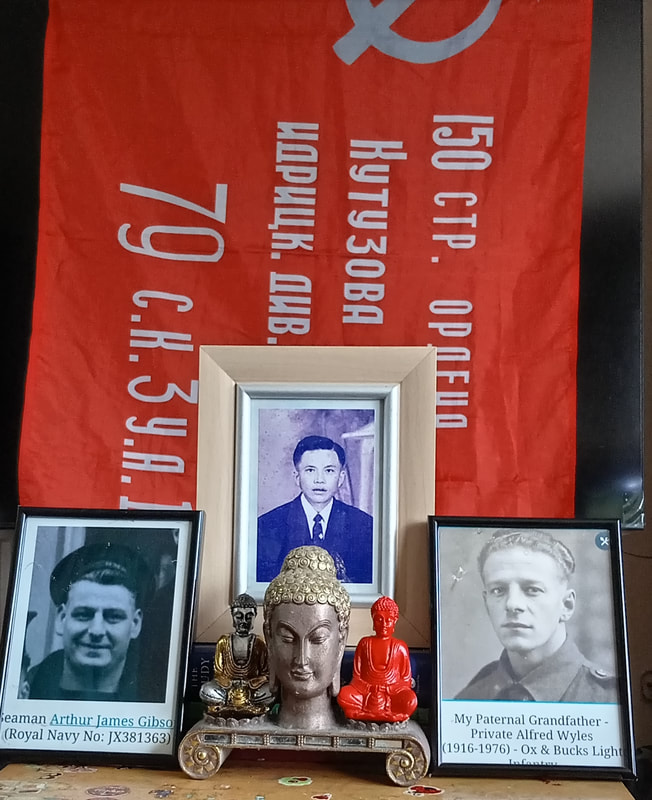
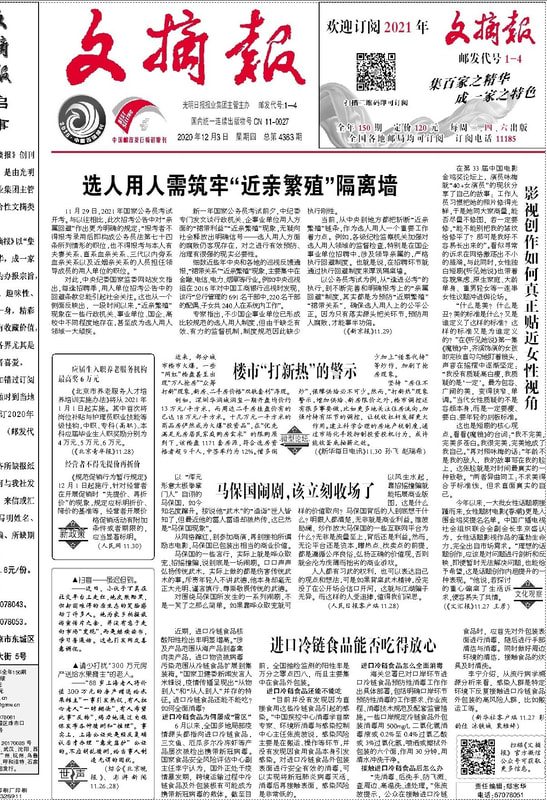
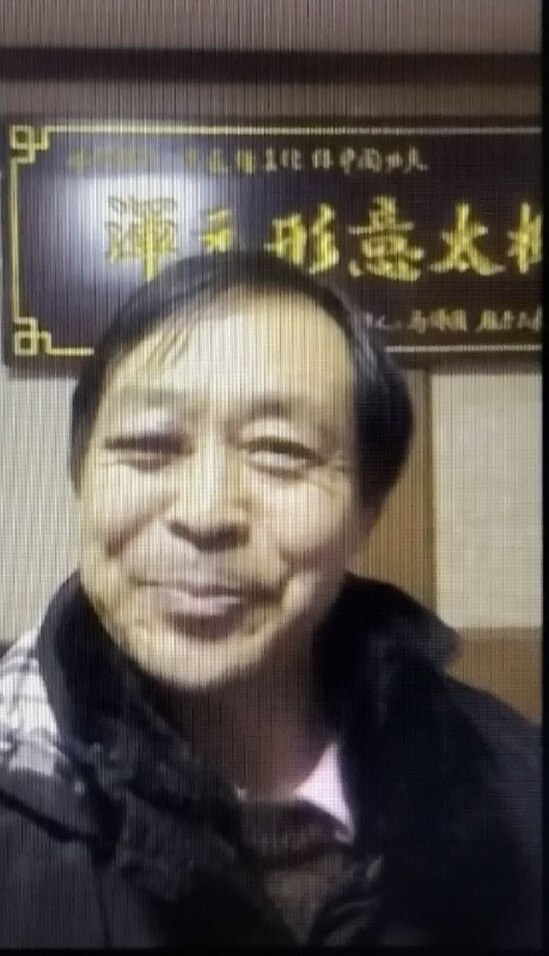
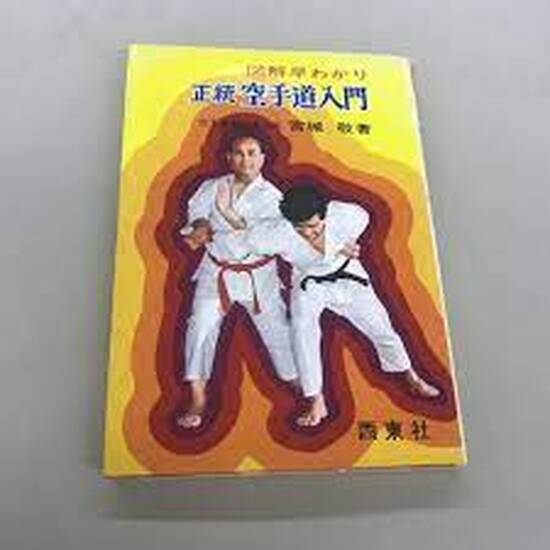
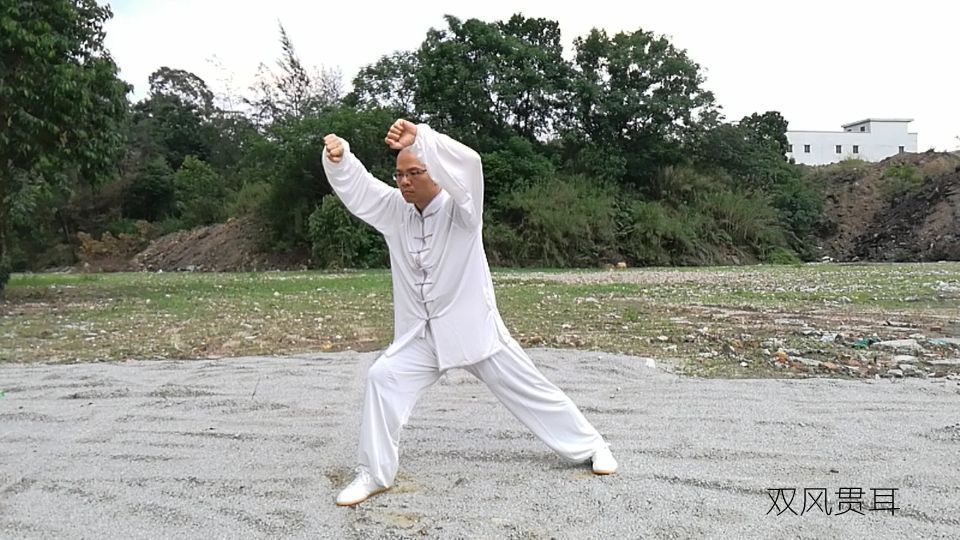
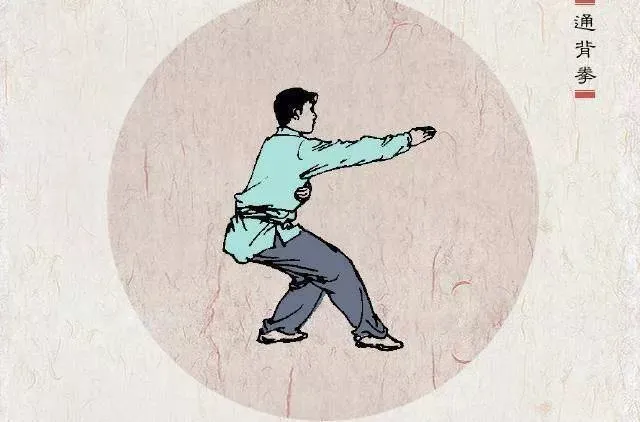
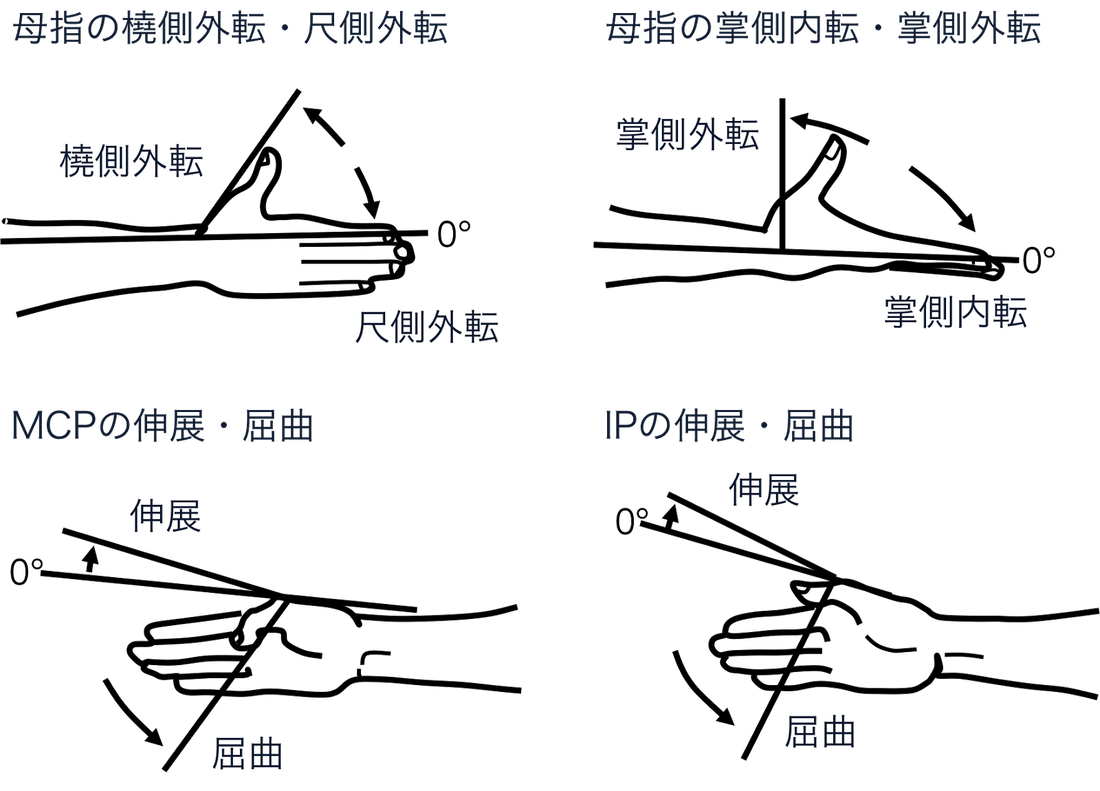
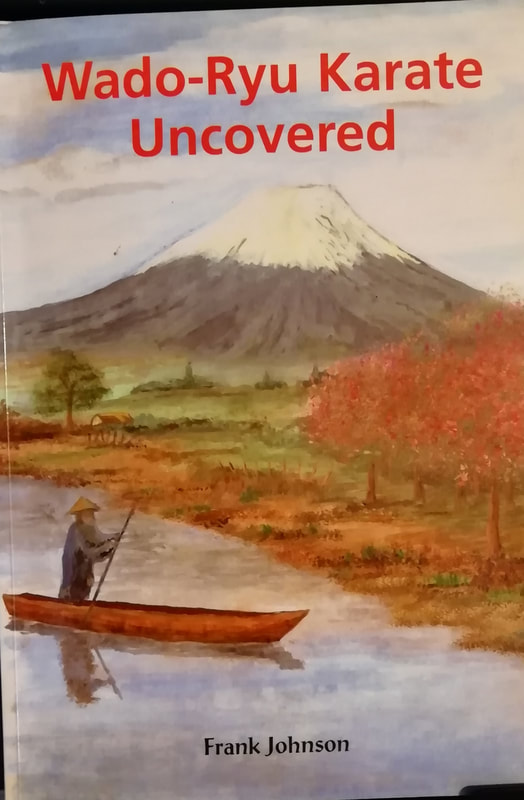
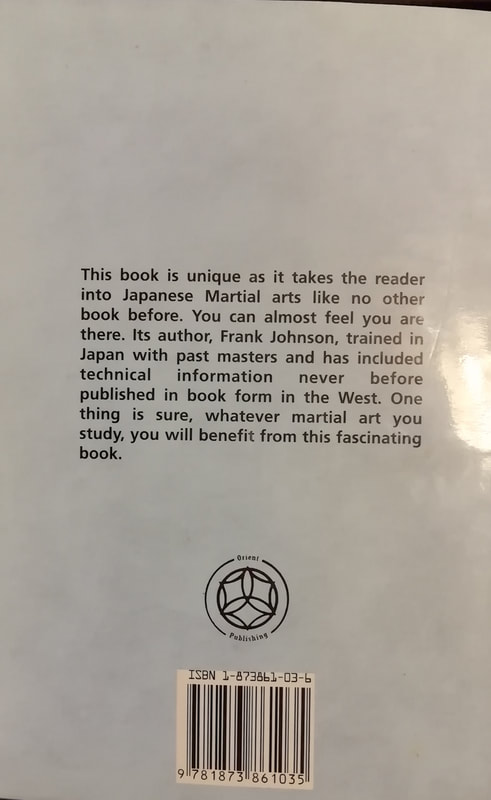
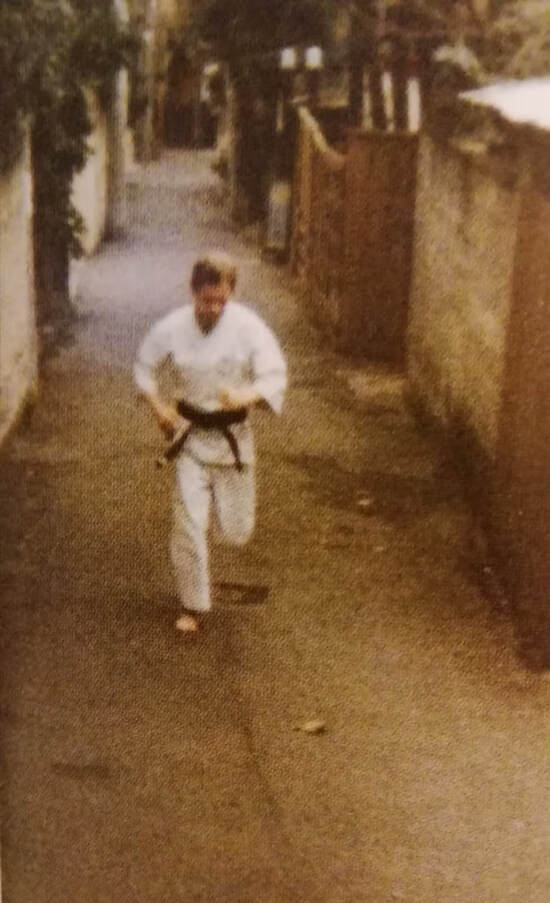
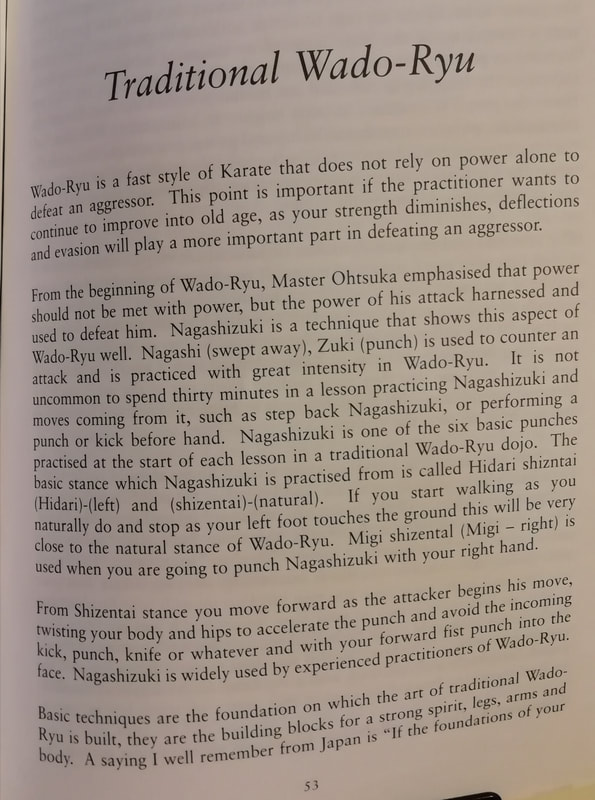
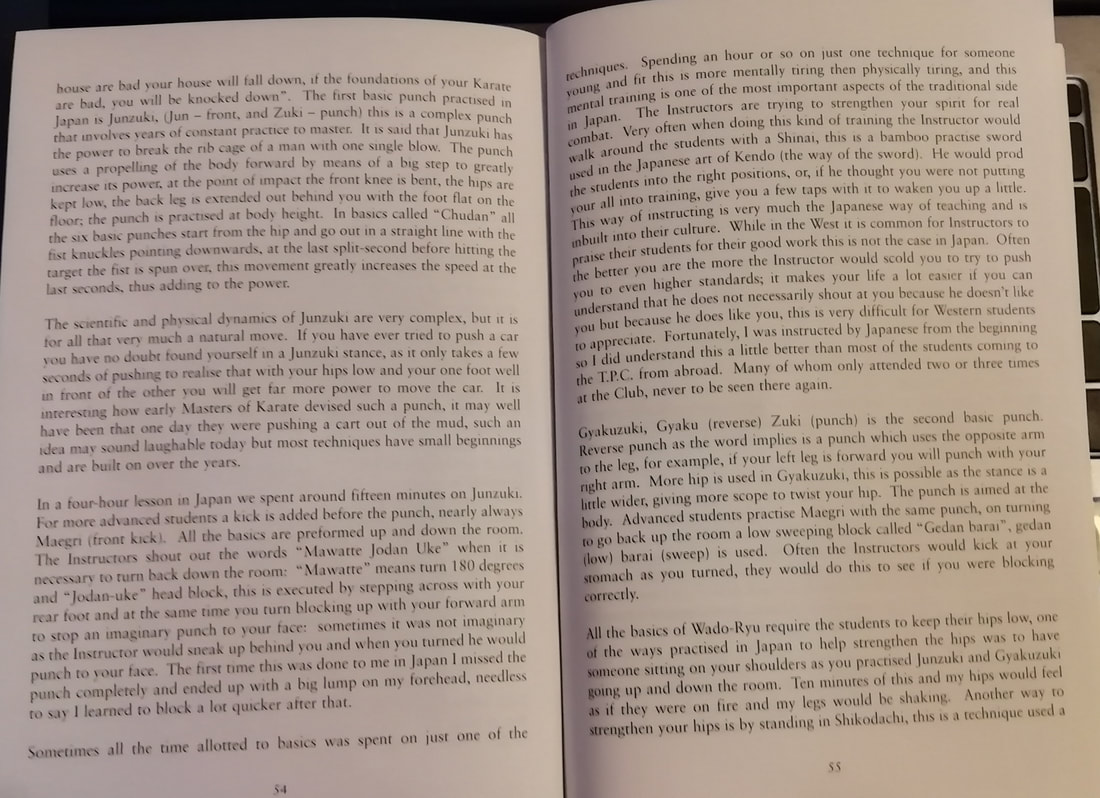
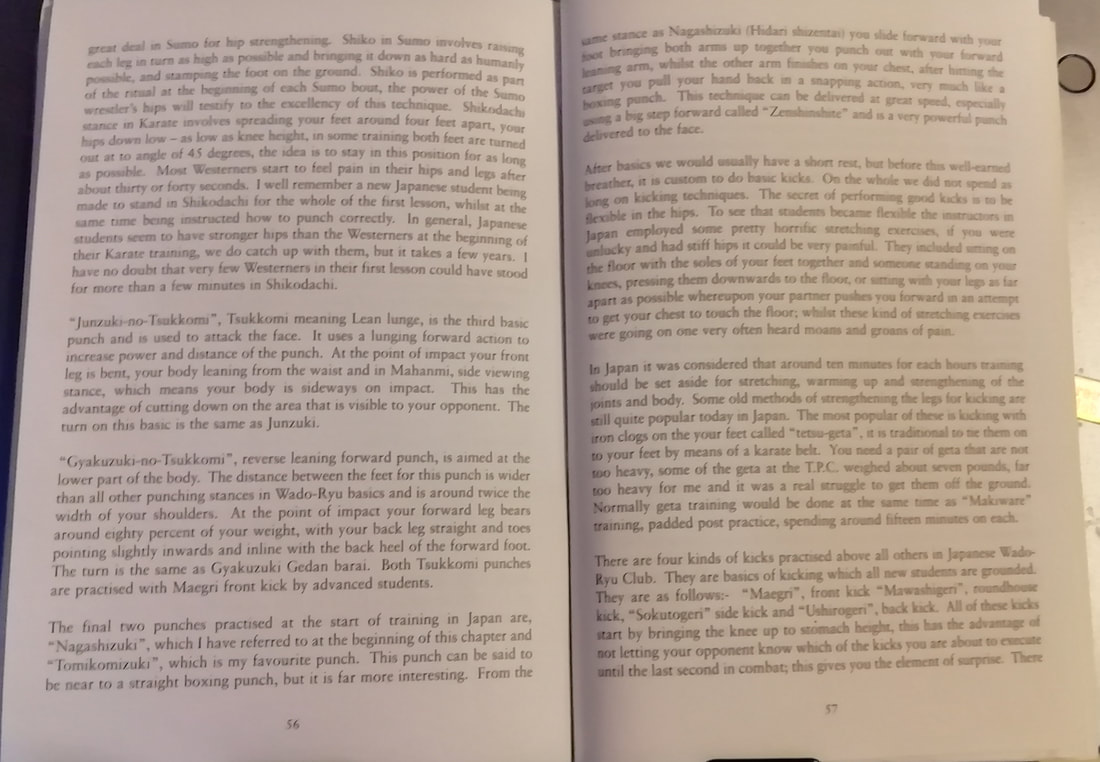
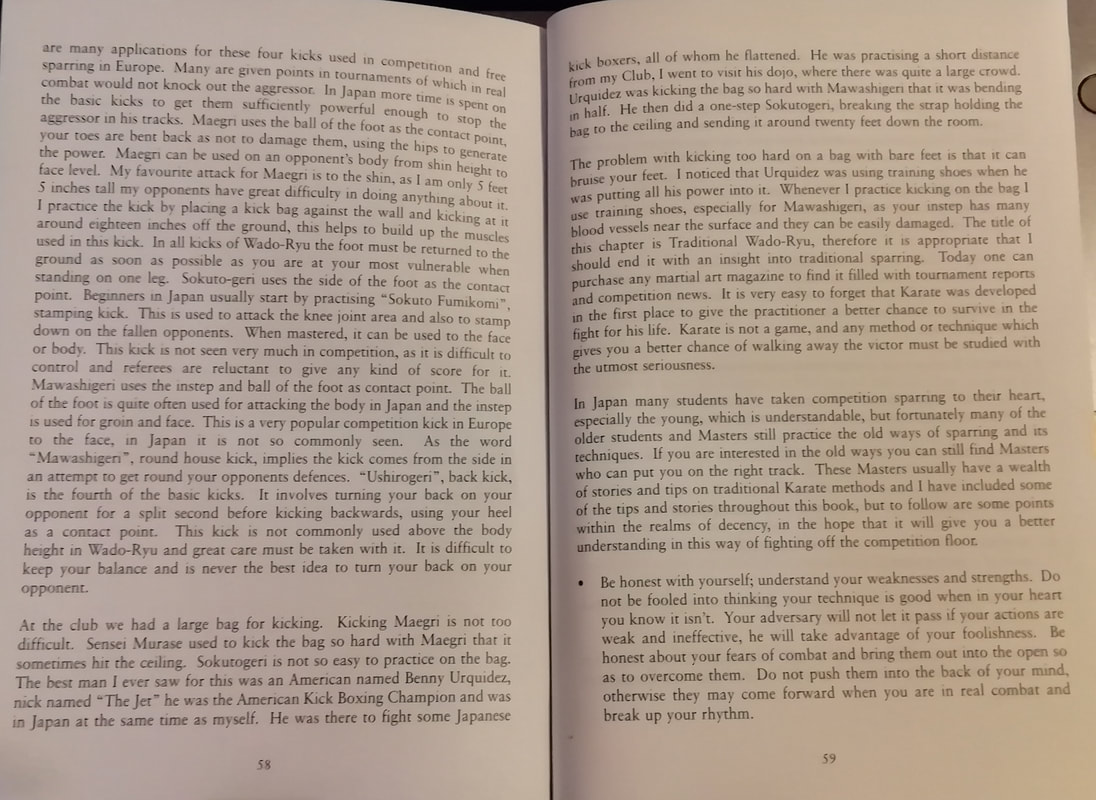
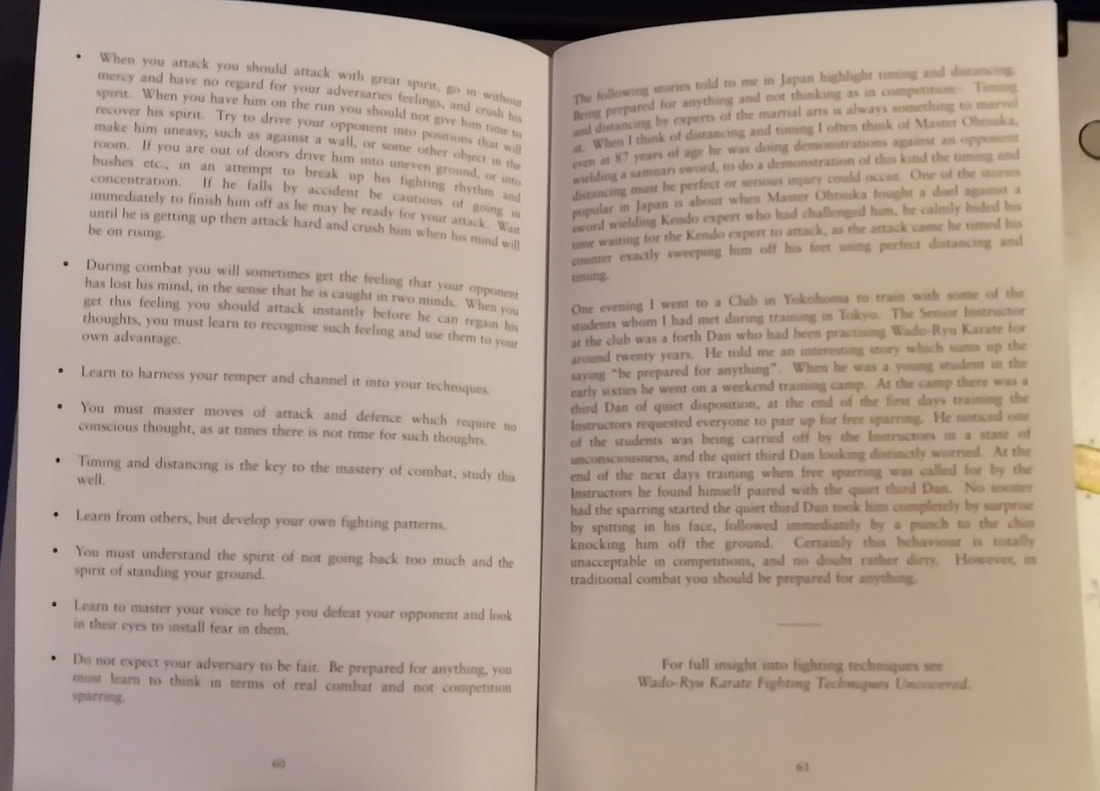
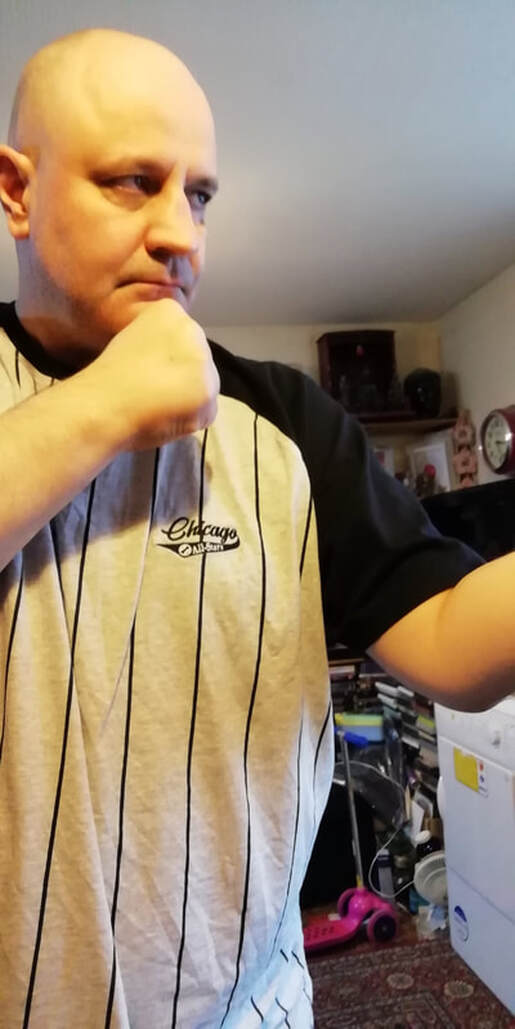
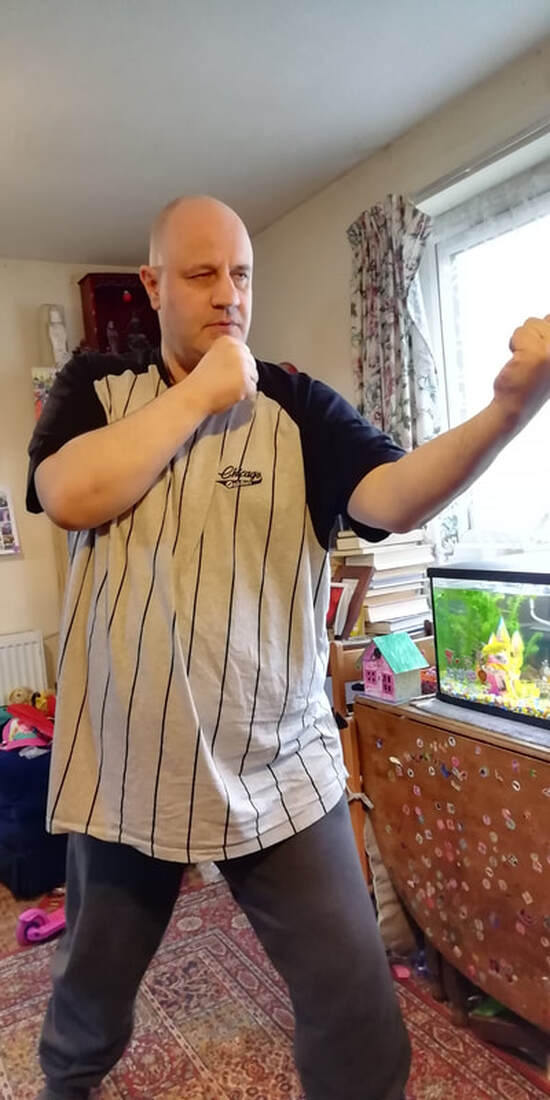
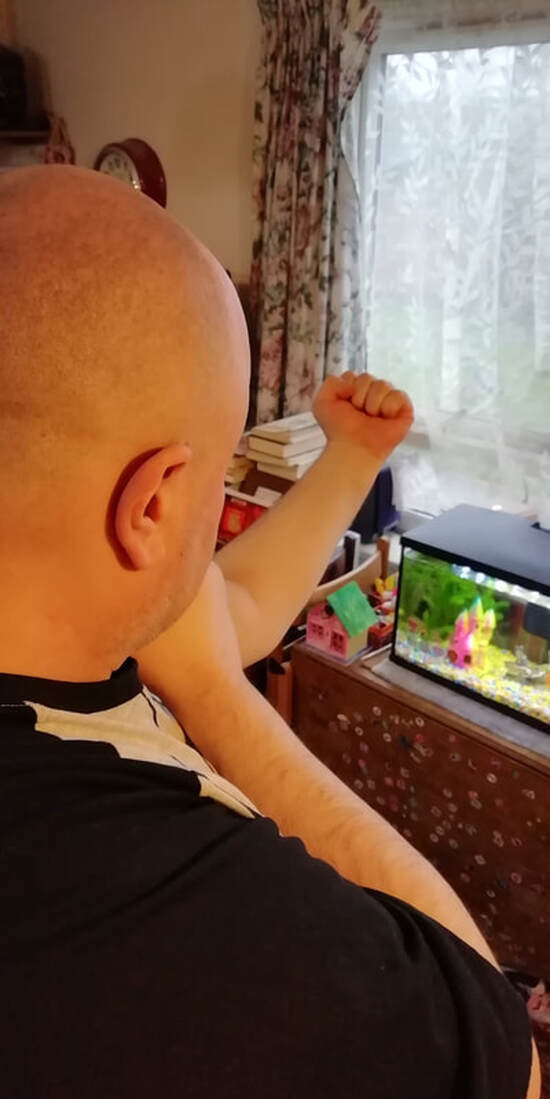
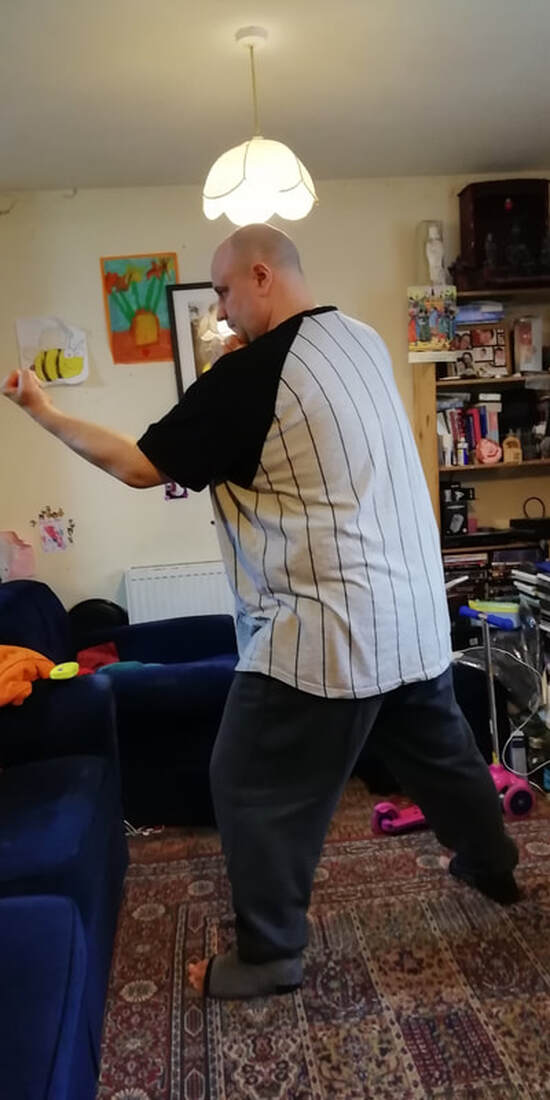
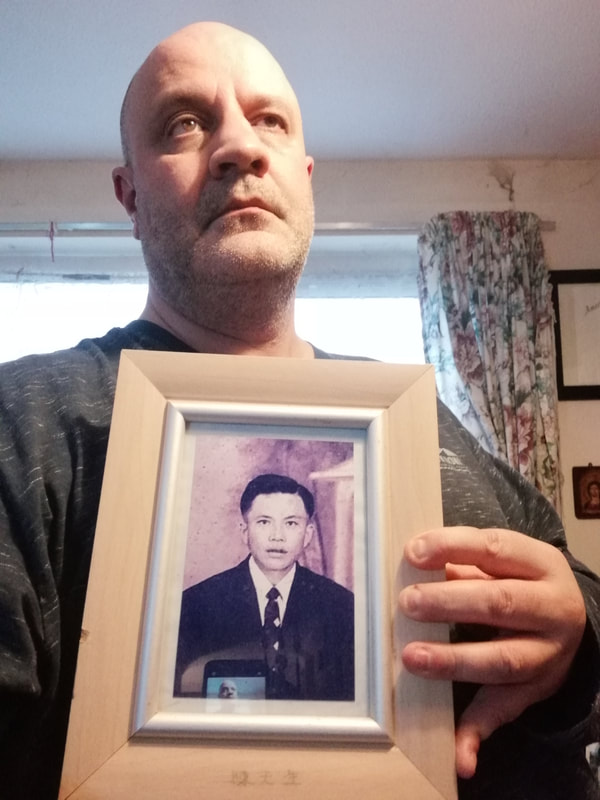
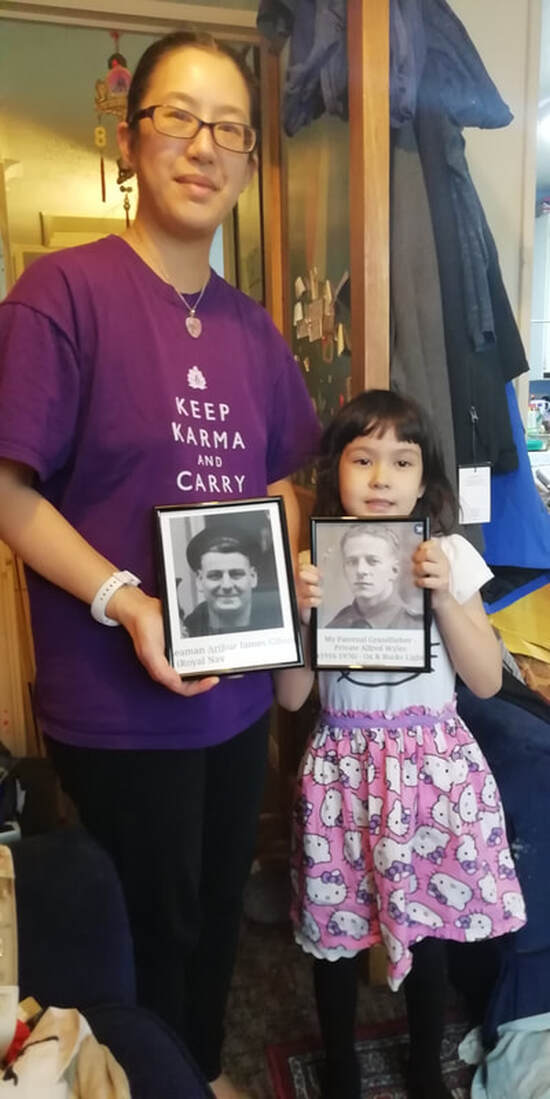
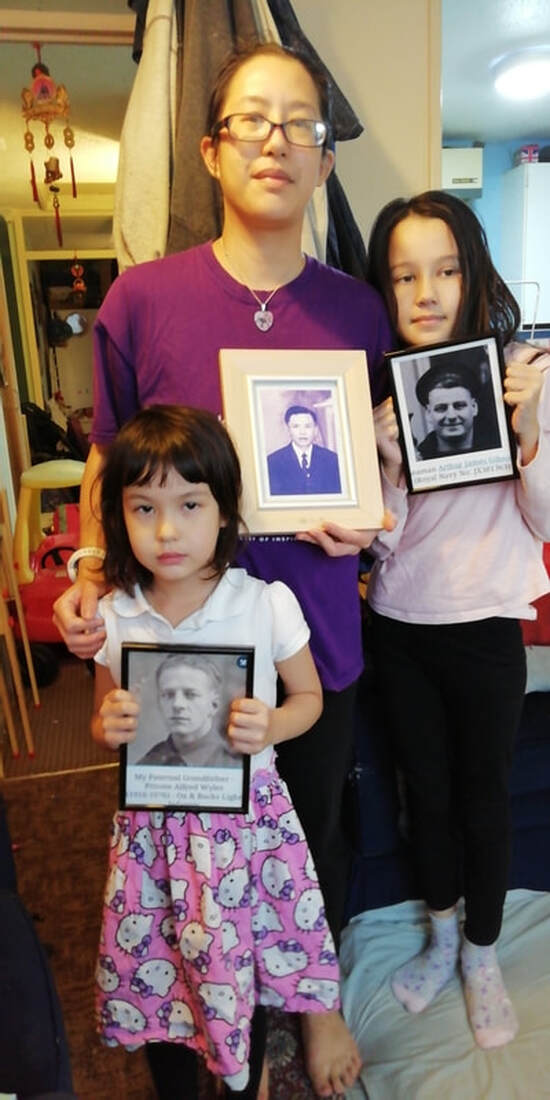
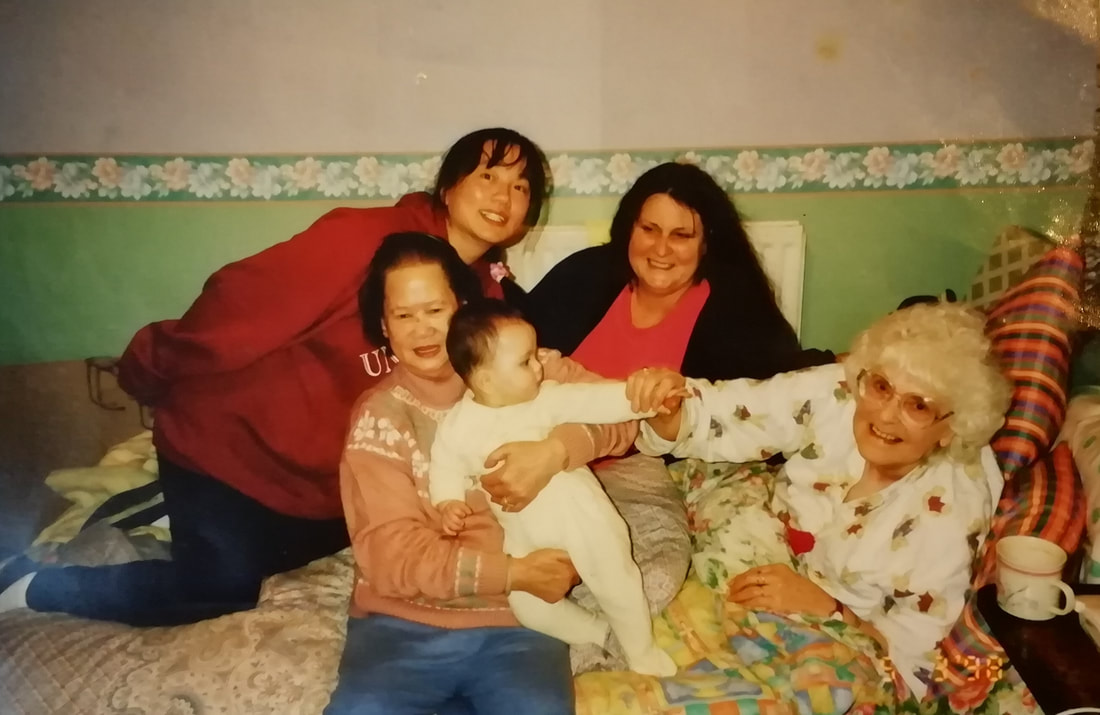
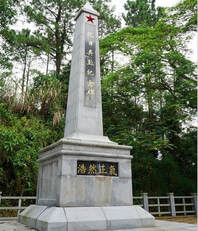
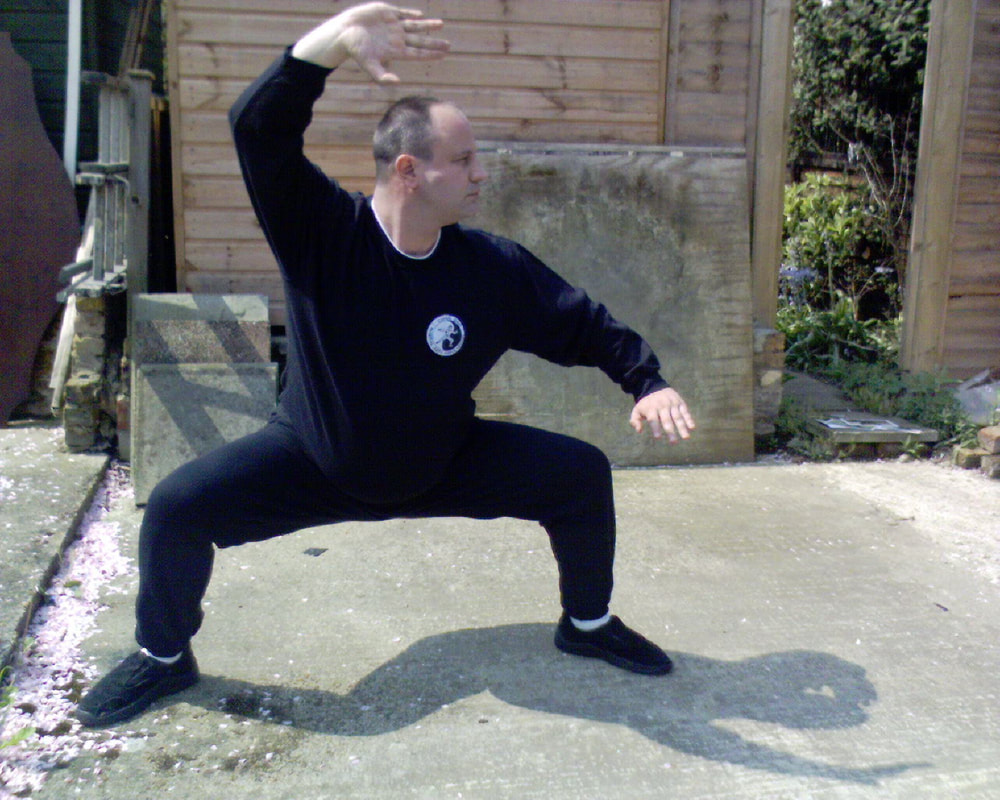
 RSS Feed
RSS Feed